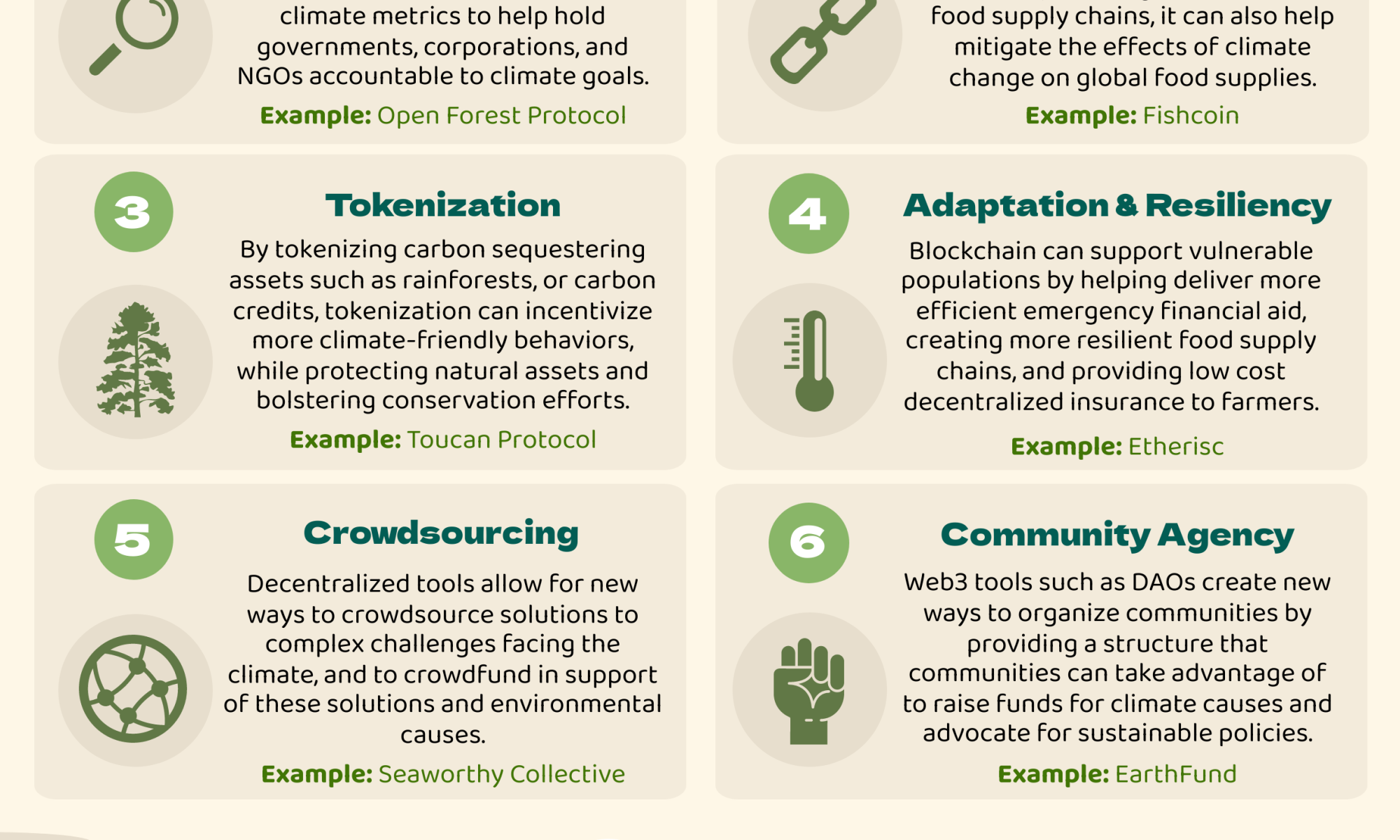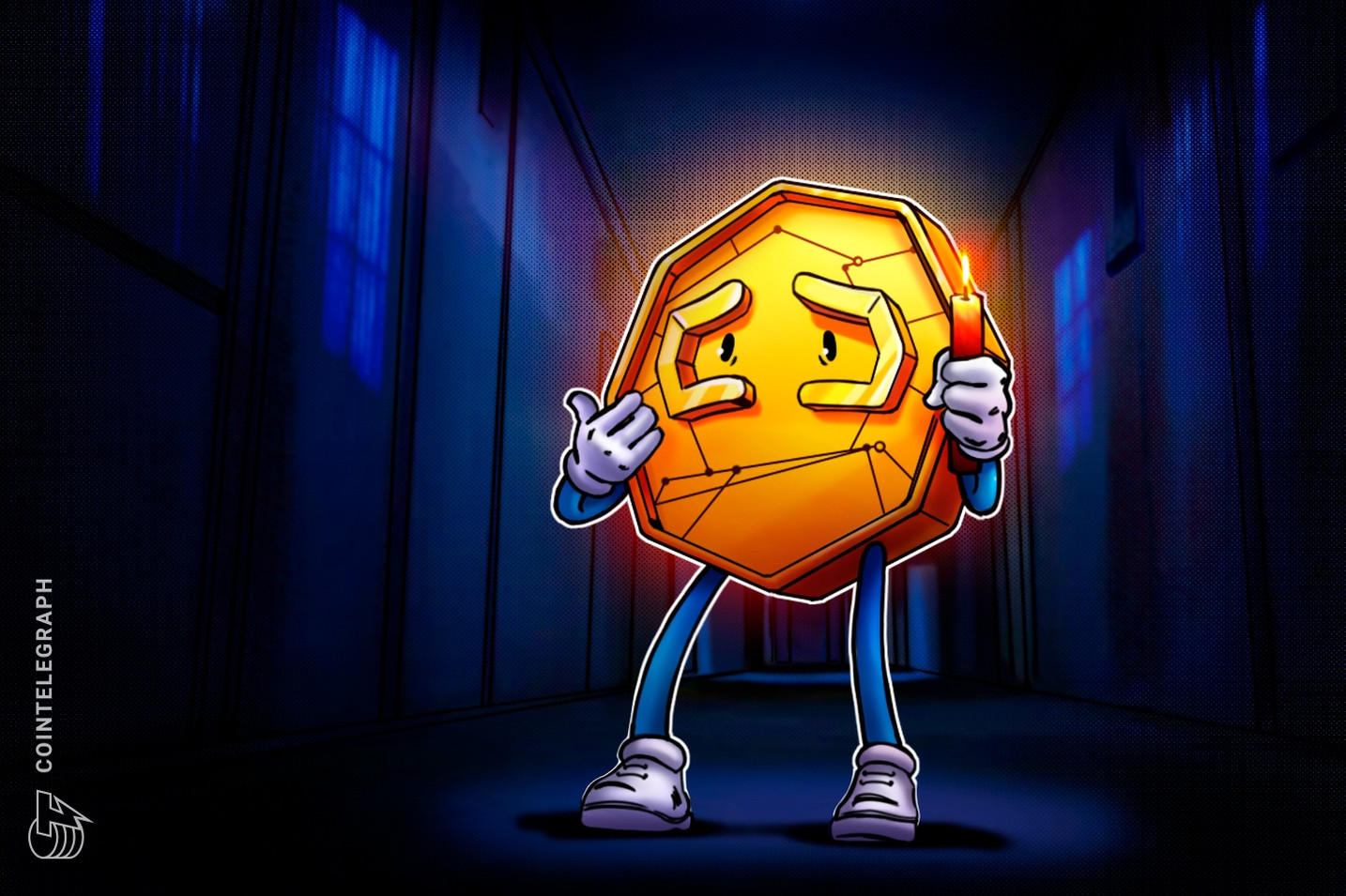Electricity costs played a vital role in the past year’s bear market as miners struggled to survive, the report said.
Tether invests in El Salvador’s $1B renewable energy project

El Salvador’s plans to build a billion dollar renewable energy precinct has found a first round investor in stablecoin issuer Tether.
El Salvador’s Volcano Energy Secures $1B in Commitments For 241 MW Bitcoin Mine
The 241 MW site will be powered by wind and solar energy.
Bhutan mines Bitcoin with hydropower since BTC price was $5,000

The Kingdom of Bhutan uses Himalayan rivers to generate energy used to mine Bitcoin, local reports reveal.
How Irish farmers turn cow dung into digital gold (Bitcoin)

Tom Campbell, an Irish dairy farmer who runs a farm in County Armagh, is using excess energy from his farm to mine Bitcoin.
Can blockchain help combat climate change?

Blockchain’s transparency and traceability can aid sustainability and reduce carbon emissions for climate change.
Bitcoin miners as energy buyers, explained

Bitcoin miners as energy buyers utilize renewable energy sources and excess electricity offered by utility companies to fuel their mining operations.
Bitcoin mining brings more than money to this East African country

A Bitcoin mining project in a remote corner of Malawi, a landlocked country in southeastern Africa, connects more families to the grid while delivering economic empowerment to an impoverished region.
Decentralized solutions for climate change are key as COP disappoints

Climate change initiatives led by politicians and sponsored by some of the biggest polluters demand a change in initiatives — Decentralized tech could play a key role.
What does the global energy crisis mean for crypto markets?

While miners stand to be significantly affected by the current power crisis, there is still some hope that the prevailing macro conditions could work in favor of the crypto industry.
Is post-Merge Ethereum PoS a threat to Bitcoin’s dominance?

Cory Klippsten, the CEO of Swan Bitcoin, shares his views on how “the competition for liquidity” between Bitcoin and Ethereum will play out after the latter’s switch to a proof-of-stake system.
Norwegian town wants ‘noisy’ Bitcoin miners out, experts respond

A municipality in Norway is using all means necessary to avoid “energy-sucking” Bitcoin miners establishing further operations, citing noise complaints and energy concerns.
Will the Bitcoin mining industry collapse? Analysts explain why crisis is really opportunity

Many BTC miners are in a tough spot and a few could collapse, but experts say the industry is here to stay.
Bitcoin mining to harness onsite natural gas emissions: Ark Invest

A new report reveals an angle for sustainability in Bitcoin mining through harnessing onsite natural gas emissions.
How blockchain can address Austria’s energy crisis

In the future, energy communities should make a greater contribution to the energy transition.
Bitcoin mining could be good for US energy independence: Research

Texas representative Pete Sessions made a simple yet powerful statement that the proliferation of the Bitcoin mining industry could promote energy independence in the country.
More Green Energy: Crypto Mining Saves A Hydro Power Plant In Costa Rica
Green energy powers most of Bitcoin mining and the world might as well face it. And the rest of the cryptocurrencies that use Proof-Of-Work might be right behind, because they follow the same incentives. In their quest for cheaper energy sources, they all reach the same conclusion. Humanity is wasting renewable energy all over the world. And wasted energy is the cheapest of them all.
In today’s story, a hydropower plant that had to pause operations for nine months found cryptocurrency mining and got the dream client they needed. Reuters gives us the prelude to the story:
“The plant was forced to reinvent itself after 30 years because the government stopped buying electricity during the pandemic due to surplus power supply in the Central American country, where the state has a monopoly on energy distribution.”
How much green energy does a country has to have to just stop buying from a clean hydro plant? Well, according to hydropower.org:
“At the end of 2016, Costa Rica reached a total installed hydropower capacity of 2.12 GW. The country dominated the headlines for the second consecutive year, achieving 100 per cent renewable electricity production for a total of 271 days.”
How Did Crypto Mining Enter The Hydro Plant’s Picture?
Every talking head and their grandmas spread ESG FUD through traditional media. And that spills into social media, where everybody is oh-so-sure that crypto mining is boiling the oceans. Because of that, Eduardo Kooper, the owner of the plant, doubted going the crypto mining route. However, they just had to pivot. They tried other ventures, like making frozen food, and none of them work. There was no other choice.
“I was very skeptical at first, but we saw that this business consumes a lot of energy and we have a surplus.”
The hydroelectric company, with its three plants valued at $13.5 million and a three Megawatt capacity, invested $500,000 to venture into hosting digital mining computers.”
Why would miners move their operation to a hydro plant, though? Wouldn’t it be more comfortable doing it at home? They are heavily incentivized to look for the cheapest energy possible, that’s why. And green energy is renewable. Coal is not. The Reuters report quotes one of the hydropower plant’s satisfied customers:
“Installing it in this place is much more profitable than at home,” at almost half the cost, he calculated, after connecting his computer to the network at the river-powered plant.”
Business is business.
BTC price chart for 01/12/2022 on OkCoin | Source: BTC/USD on TradingView.com
Green Energy And Crypto Mining, A Match Made In Heaven
We at NewsBTC have been telling you this. Bitcoin mining incentivizes the creation of green energy infrastructure. And it can finance green energy plants already in place. Mining provides both a buyer of first resort and a buyer of last resort. Three months ago, we wrote:
“A whitepaper by the Bitcoin Clean Energy Initiative from earlier this year had explained how bitcoin mining, when using renewable energy, “is especially suited to accelerate the energy transition” towards a cleaner electricity grid.”
And two months ago, in an article on how Bitcoin mining is helping the Navajo Nation in more ways than one, we told you:
“As the world is trying to phase out coal-powered energy, the Navajo innovate to keep up with the times. According to Walter Hasse, Navajo Tribal Utility Authority president, “I had excess electricity that I still had to pay for and deal with. Now, I want to build renewable energy to replace my lost coal resources that are throughout the nation. I need someone to consume that renewable energy resource.”
And with Bitcoin mining, they have that buyer. And now, the other PoW cryptocurrencies can follow Bitcoin’s example. In Costa Rica, the other side of the world, a power station manager reaches the same conclusion as the Navajo Tribal Utility Authority president. Quoting Reuters again:
“Kooper said international cryptocurrency miners are looking for clean, cheap energy and a stable internet connection, which Costa Rica has plenty of. However, he said Costa Rica’s government should be more aggressive about trying to attract more crypto mining business, although he gave no specifics.”
The Green Energy Future We Deserve
Proof-Of-Work mining is a net positive for the planet. It will lead us to the green energy future that humanity’s dreaming of. It’s the only industry that can do so. And the revolution is already well underway.
Featured Image: Screenshot from Reuters’ video report | Charts by TradingView
Lessons From Reason’s “The Fake Environmentalist Attack on Bitcoin” Mini-Doc
Phenomenal piece by Reason Magazine. We at NewsBTC have been countering the Bitcoin-is-bad-for-the-environment narrative for a while now. Now, we have a new tool. A short and sweet documentary that rests on a devastating premise. “Such environmentalist attacks on bitcoin are best understood as a strategy by economic, media, and political elites to undermine a powerful new form of money that they can’t control.” Boom! That’s exactly what’s happening.
Related Reading | Bitcoin Mining Vs. The World: BTC Leads Sustainable Energy
Let’s explore the idea further, but first, let’s let Reason Magazine define who they are and what they stand for:
“Reason is the planet’s leading source of news, politics, and culture from a libertarian perspective. Go to reason.com for a point of view you won’t get from legacy media and old left-right opinion magazines.”
You’ve been warned. This is the perspective you’ll get from this article and from “The Fake Environmentalist Attack on Bitcoin” Mini-Doc:
The mini-documentary starts with the filthy propaganda the state usually serves:
“Cryptocurrencies like bitcoin are terrible for the environment,” declares Sen. Elizabeth Warren (D-Mass.). “It’s an extremely inefficient way of conducting transactions,” pronounces former Federal Reserve Chair and current Treasury Secretary Janet Yellen. “It’s a way to both hide dirty money and destroy the environment at the same time,” says Daily Show host Trevor Noah.
Reason Magazine Summarizes The Government’s Perspective
Then, Elizabeth Warren brings up the most ridiculously flamboyant stat ever uttered. According to the Senator, a single Bitcoin transaction uses the same amount of energy that an average house uses in 53 days. WHAT? Couldn’t these government people control themselves and provide a more plausible number? Do people actually believe these made-up stats? Apparently, they do, as the Discord story proves.
“Discord’s founder and CEO Jason Citron hinted at possible integration with the Ethereum ecosystem, with NFTs, and with the incoming Web3. And all hell broke loose.
Discord fanatics spammed Citron’s replies and canceled their subscriptions to their Nitro premium service. Discord’s own employees took to social media to express their discomfort. Video game culture influencers rallied the masses and gathered hundreds of Likes and Retweets. What were their reasons? Environmental concerns.”
Back to Reason’s documentary, Bitcoin spokesperson Nic Carter dismantles the government’s techniques. They establish an exaggerated per transaction cost, and then “extrapolate Bitcoin’s transactional load to hundreds of billions per year.” They’re not dumb, they know that “The electricity consumed by mining isn’t used to power individual transactions.” However, the average citizen doesn’t. Nic Carter closes with, “Bitcoin’s transactions and Bitcoin’s energy use are not really correlated.”
They aren’t. Bitcoin produces one block full of transactions every ten minutes on average. If we reduced the mining to only one machine, Bitcoin would still produce the same amount of blocks in the same amount of minutes.
BTC price chart for 11/19/2021 on Capital.com | Source: BTC/USD on TradingView.com
The Media Claims Are Outlandish, To Say The Least
The mini-documentary’s host is Nick Gillespie, Reason’s Editor At Large. He admits “The energy used by Bitcoin mining has increased significantly and it will continue to grow, but the media claims are outlandish.” As an example, he offers this ridiculous 2017 Newsweek article titled “Bitcoin Mining on Track to Consume All of the World’s Energy by 2020.” As you might suspect, Newsweek’s prediction didn’t come true.
Then, it’s time for some real stats. According to the Cambridge Center for Alternative Finance, Bitcoin consumes “just over a hundred terawatt-hours per year.” That’s 117.02, to be exact. That’s on the high end of the spectrum of Nick Hansen’s estimations. According to him, “most likely, the Bitcoin network is between 4.2 and 14.2 Gigawatts” per hour. If the network consumed the full 14.2 Gigawatts per hour, that would amount to 124 terawatt-hours per year. However, it’s probably considerably less if Hansen’s stats are right.
Pick the number you trust the most, it’s still a worthy investment considering everything Bitcoin offers the world.
Critics Tend To Ignore These Facts
Reason defines mining as “the process through which a global network of computers maintains the bitcoin network through computation. Though energy-intensive, this process is what makes bitcoin a truly decentralized monetary system.” And that’s a fact. Proof-Of-Work is essential to decentralization. There is no alternative. A little later, Reason’s Nick Gillespie hits us with another home run, “the work being carried out by this global computer network is what allows Bitcoin to be controlled by mathematical rules instead of human actors vulnerable to government or corporate control.”
Then, the documentary presents another crucial fact, “Miners are incentivized to use energy that would otherwise go to waste.” The Human Rights Foundation’s Alex Gladstein puts it in another way, “Bitcoin miners need energy that nobody else wants.” Why? Because it’s cheaper. The incentives are clear as day.
After that, Reason brings out the ace under Bitcoin’s sleeve, “In the Western United States, mobile Bitcoin miners are already running on electricity derived from unused natural gas from oil wells that can’t be captured because there are no pipelines to carry it.” Luckily for the government, Reason doesn’t bring up everything Bitcoin mining is doing for the Navajo Nation.
Reason Closes It Off With Even More Stats
In a questionable move, Reason quotes the Bitcoin Mining Council controversial report. That one puts Bitcoin’s sustainable energy use at around 56%. Let’s quote NewsBTC’s report on that number.
“The good news is, there’s data to show that Bitcoin’s “mining electricity mix increased to 56% sustainable in Q2 2021.” Is that data valid? That’s another question altogether. The Bitcoin Mining Council elaborates on the results:
The results of this survey show that the members of the BMC and participants in the survey are currently utilizing electricity with a 67% sustainable power mix.”
Related Reading | Power Ledger Blockchain Firm Signs Deal with Japanese Green Energy Supplier
We can say that because, here at NewsBTC, we’re partial to Bitcoin. Was it a good idea for Reason to use it? Maybe not, but notice that they used the conservative 56% figure and not the aspirational 67% one. The magazine knows what it’s doing. That’s why they brought back Nic Carter to close the documentary, “Bitcoin is a vote of no confidence in the monetary and financial system that exists today.”
That’s exactly what it is. Among other things.
Featured Image: Screenshot from the documentary | Charts by TradingView
The Navajo Nation Is Mining Bitcoin With Sustainable Energy. Here’s How
The Navajo Nation’s Bitcoin story might be the most wholesome of the last few months. The mine isn’t only providing employment within the reservation, it’s helping them transition from providing coal-powered energy to renewables. Another case study that proves Bitcoin incentivizes and funds green energy. Another story of Bitcoin helping the disenfranchised people of the world to find their footing.
Related Reading | New To Bitcoin? Learn To Trade Crypto With The NewsBTC Trading Course
How disenfranchised are the Navajo? “The Federal Government took away all the land rights away from the Navajo people,” says a disembodied voice in the Compass Mining mini-documentary. According to it, among the Nation:
- 48% are unemployed
- 40% live without running water
- 32% live off the grid
- 33% live below the poverty line
“But the Navajo are resilient people who’ve claimed the desert Southwest as home since time immemorial,” said director Will Foxley via Twitter. And now, they have Bitcoin on their side.
The First Bitcoin Mine In Navajo Territory
The audiovisual piece comes with this text as a companion, which tells the story of how the first Bitcoin mine came to be:
“In 2017, a small Canadian firm named West Block approached the Navajo about building a mine on Navajo land. At 8 megawatts (MW) in size after the initial round, the Navajo invested in an equity stake in the mine during the bear market of 2018. Three years later, Bitcoin mining has turned a corner to become one of the most profitable sectors of Bitcoin itself.”
Apparently, 58% of the mine’s energy already comes from the depicted solar farm. “The Bitcoin mine is incentivizing renewables to be built on Navajo country to replace coal,” says the mini-documentary’s narrator. Foxley claims that “the Bitcoin mine uses Navajo energy on Navajo land for Navajo employment.” However, the text states that “The Navajo chose to divest themselves at a profit.” The move was positive, though, because it ended up “placing the money back Navajo peoples hands with investments into the public utilities.”
Not only that, the mine uses renewable energy from the abundant Navajo sun. Nearby cities used to take Navajo energy (coal) off the reservation.
But the Bitcoin mine uses Navajo energy on Navajo land for Navajo employment. pic.twitter.com/NZUwigZ4vP
— Will Foxley  (@wsfoxley) November 4, 2021
(@wsfoxley) November 4, 2021
The Navajo Nation’s Transition To Clean Energy
In the past, the Navajo have had their runnings with dirty forms of energy. The text summarizes them this way.
“The Navajo story of the 20th century is fraught with energy abuse, including malpractice in coal and uranium extraction for people off the reservation. Today’s generation of Navajo continue to live with these negative externalities, such as heightened levels of radiation in well water.”
However, as the world is trying to phase out coal-powered energy, the Navajo innovate to keep up with the times. According to Walter Hasse, Navajo Tribal Utility Authority president, “I had excess electricity that I still had to pay for and deal with. Now, I want to build renewable energy to replace my lost coal resources that are throughout the nation. I need someone to consume that renewable energy resource.”
Who could consume that energy,? we wonder. What industry is mobile enough to move to the desert and start making money for everyone around right away? Well, the mini-documentary is all about exactly that exact phenomenon.
BTC price chart for 11/06/2021 on CEXIO | Source: BTC/USD on TradingView.com
Jobs For The Navajo People
Traditionally, the Navajo don’t want to leave the reservation. However, there are not many employment choices there. Until Bitcoin came along, that is. According to Foxley, the mine now hosts around 3,000 machines. According to the text, “The facility currently employs two full-time employees. With the expansion, that number will grow to eleven. That money then flows from the mine into local jobs creating even more buzz.” Not only that, the documentary’s narrator promises “more mines scheduled to come online in the coming months.”
Related Reading | Bitcoin Mining Vs. The World: BTC Leads Sustainable Energy
Considering a mining company commissioned both the audiovisual piece and the text, we could assume who’s behind those “more mines scheduled.” And we salute them.
Featured Image: Screenshot from the mini-documentary | Charts by TradingView
Bitcoin Mining Vs. The World: BTC Leads Sustainable Energy
Recent reports show that Bitcoin mining uses great amounts of renewable energy due to economic incentives. This turn of events raised their numbers of sustainable power mix to almost three times higher than the world average.
As renewable energy offers low costs, bitcoin miners, who had to spend 68.42% of their total income to purchase electricity, have upscaled their efficient use of green energy. A recent data review shows how their mix of sustainable energy is higher than any country or industry.
Bitcoin mining sustainable power mix estimated in 58% – Source: Arcane Research
Renewable energy is not flexible and their locations do not tend to be convenient for most people. As bitcoin miners move close to sources of energy to lower the costs, they are a viable solution to not waste the sustainable energy that otherwise would be deployed, as explained by CoinShares.
According to a survey carried by the Bitcoin Mining Council (BMC), the electricity mix used by bitcoin miners increased 3% from second-quarter to an approximate of 57.7% sustainable in third-quarter 2021 “making it one of the most sustainable industries globally.”
MicroStrategy’s CEO Michael Saylor had stated earlier that the Bitcoin Mining Council’s effort to bring clarity and transparency over Bitcoin mining will most likely “play an important role in demystifying” the industry.
Furthermore, a whitepaper by the Bitcoin Clean Energy Initiative from earlier this year had explained how bitcoin mining, when using renewable energy, “is especially suited to accelerate the energy transition” towards a cleaner electricity grid:
With bitcoin mining integrated into a solar system, (…) energy providers – whether utilities or independent entities – would have the ability to play the arbitrage between electricity prices and bitcoin prices, as well as potentially sell the “surplus” solar and supply almost all grid power demands without lowering profitability.
China’s Ban Impact On Bitcoin Mining
Digiconomist data shows that China’s ban of all Bitcoin mining activities dropped the total amount of “active computational power in the network” by 50%. The reduction of mining competition also generated higher levels of income for active miners worldwide.
Torbjørn Bull Jenssen CEO of Arcane commented earlier:
As China is turning away from bitcoin mining, the mining industry as a whole is becoming increasingly green and a driver for renewable energy around the world. Now is excellent timing for Arcane to enter into this segment, (…) Mining is a very interesting business stand alone, and it also has considerable synergies towards our other investments and business. I am looking forward to finalizing the strategy for Arcane Green Data and presenting it in more detail for our partners and investors.
Related Reading | Is China Considering Lifting The Bitcoin Mining Ban? The NDRC Runs Public Survey
In a wider panorama of energy usage by Bitcoin miners, Square funds a solar-powered facility for bitcoin mining, El Salvador explores the viability of using volcanic renewable power for mining bitcoin, and other countries propose economic incentives for bitcoin miners who use renewable energy.
Related Reading |Jack Dorsey: Square Could Build Bitcoin Mining System
CoinShare stated in June’s report that bitcoin’s network is “more renewables-driven than almost every other large-scale industry in the world.”
Bitcoin trading at $60,618 in the daily chart | Source: BTCUSD on TradingView.com





